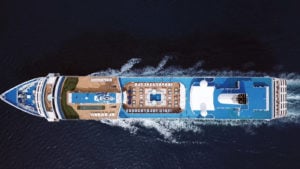Royal Caribbean (NYSE:RCL) will likely survive and thrive just fine once a vaccine is approved for the novel coronavirus. That means RCL stock could get a nice boost sometime this fall when a Covid-19 vaccine finally gets approved by the FDA.

But don’t count your chickens before they hatch here. First, all the Centers for Disease Control and Prevention has to lift its no-sail order. This lasts until Sept. 30. It seems highly likely that it will be extended again for several months, as it was in July.
Second, if it is extended, most investors will conclude that the CDC won’t lift the order until an FDA-approved and an efficacious vaccine is widely available. I wrote about this in a previous article on Carnival Corp. (NYSE:CCL).
At the time I wrote that I did not think that the company would be able to begin its U.S. operations before mid-January or February 2021. I think the same applies here with Royal Caribbean.
However, the company may not need to raise any more capital before its starts generating cash flow next year.
Liquidity Should Be Just Fine
As of June 30, Royal Caribbean had $4.15 billion in cash based on its latest 10-Q filing. Since then the company signed an agreement with Morgan Stanley on Aug. 12 for $700 million term loan. The company did not say it had drawn this loan down. It looks like it has plenty of cash.
But more importantly Royal Caribbean says it does burn more than between $250 million and $290 million per month. That means that its $4.15 billion could last at least 14 months.
It would not need to draw down the Morgan Stanley loan just to run the company. Moreover, its loan payments for the rest of 2020 are just $300 million, and $1.3 billion in 2021.
Therefore, even if it took a year before the CDC allowed Royal Caribbean to restart its operations, the company could easily survive. However, it seems likely that a vaccine will be available well before then with the lifting of the no-sail restriction.
Even assuming it continues to burn cash for another six months after the no-sail order restriction is lifted in Q1 the company will continue to survive with no liquidity issues.
That bodes very well for RCL stock. In effect, it will begin to start rising once the vaccine is approved, and maybe even well before that happens.
Where This Leaves RCL Stock
I still refer potential investors in this stock and other cruise line stocks to this well-written article by Tomi Kilgore for Marketwatch.
People have short memories. In 2019 a number of cruise industry mishaps occurred. But cruising remained popular overall and the cruise industry rebounded. Moreover, Kilgore cited more evidence cruise line clients remain loyal and understanding.
Right now, analysts are still projecting negative earnings for Royal Caribbean even for 2021, albeit at significantly lower levels. I suspect that positive earnings will not occur before 2022.
However, that does not mean the stock won’t move up beforehand. Investors will likely be willing to take a longer view once a Covid-19 vaccine is available.
Estimating Its Value
We can make a simple estimate. From 2015 to 2019 the company made between $3.02 and $8.95 in diluted EPS. The average earnings power therefore $5.99.
Next, we take 75% of that number to be conservative, or $4.49 EPS, and apply a normal multiple. Morningstar says that its average five-year price-earnings ratio was 19.2x earnings. Taking 75% of that we end up with a multiple of 14.4x.
Therefore, the expected RCL stock price in two years, based on its earnings power, is $64.66 per share. That is actually a little bit lower than today’s price of nearly $70. In other words, investors are already discounting a lot of good news in the stock price.
And don’t forget we have not yet discounted it back to the present, which would reduce it by 17% using a 10% interest rate, the expected stock price would be about $53.
But don’t forget we used 75% of the company’s earnings power as well as 75% of the multiple used. If we apply the full multiple, the price will be just $85 per share. Therefore, we can say that the expected price will be between flat to higher in two years.
On the date of publication, Mark R. Hake did not have (either directly or indirectly) any positions in any of the securities mentioned in this article.
Mark Hake runs the Total Yield Value Guide which you can review here.
